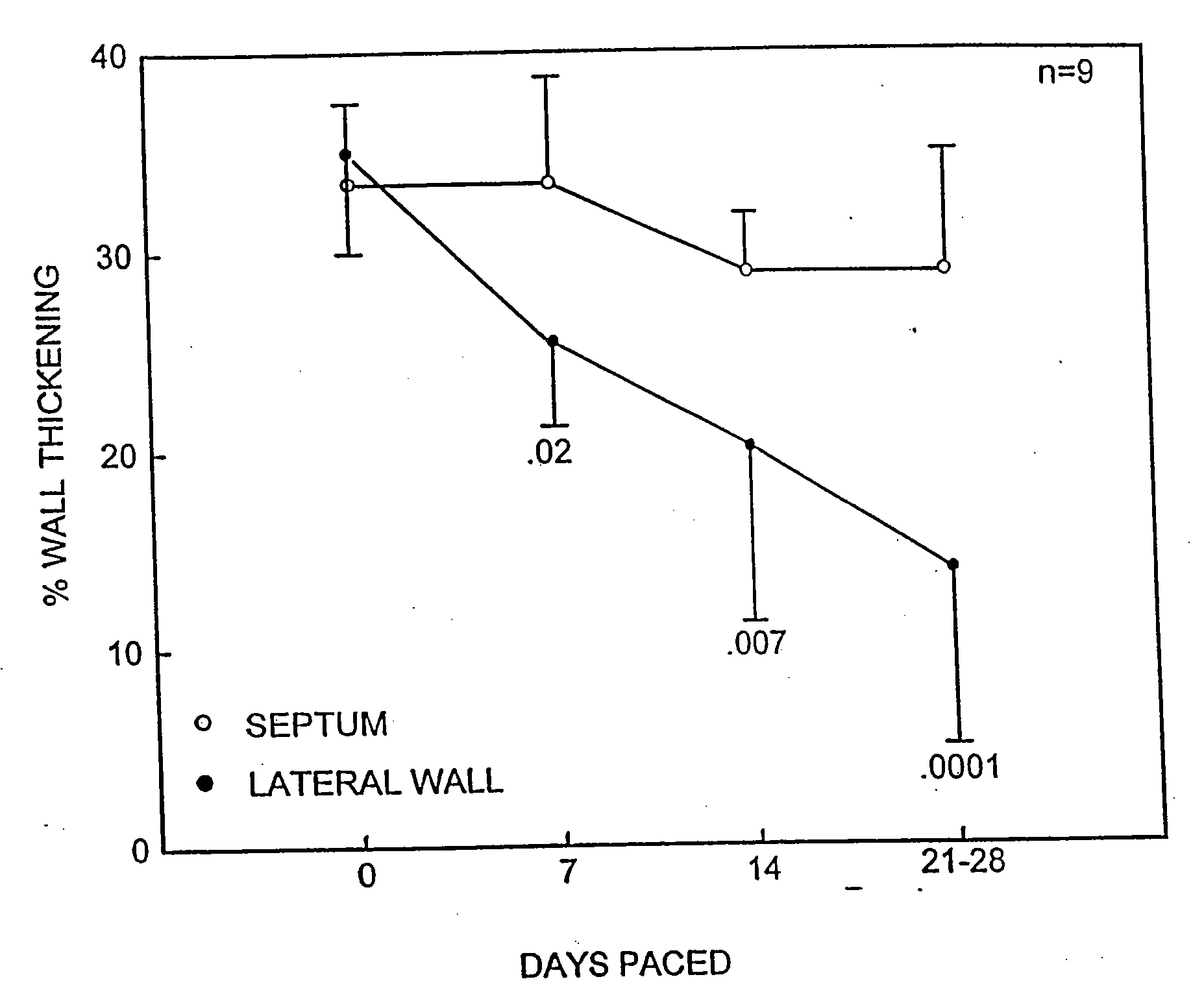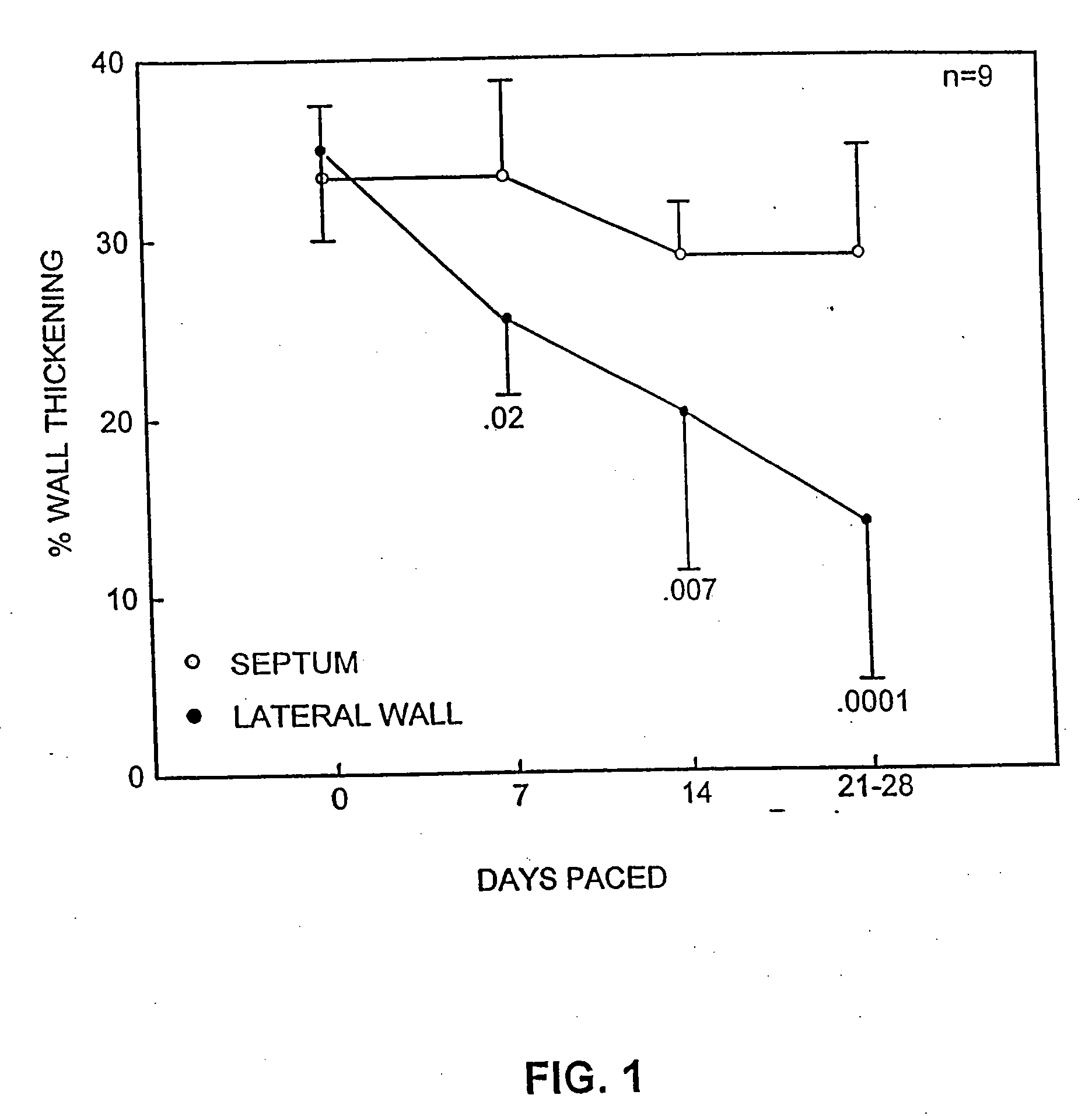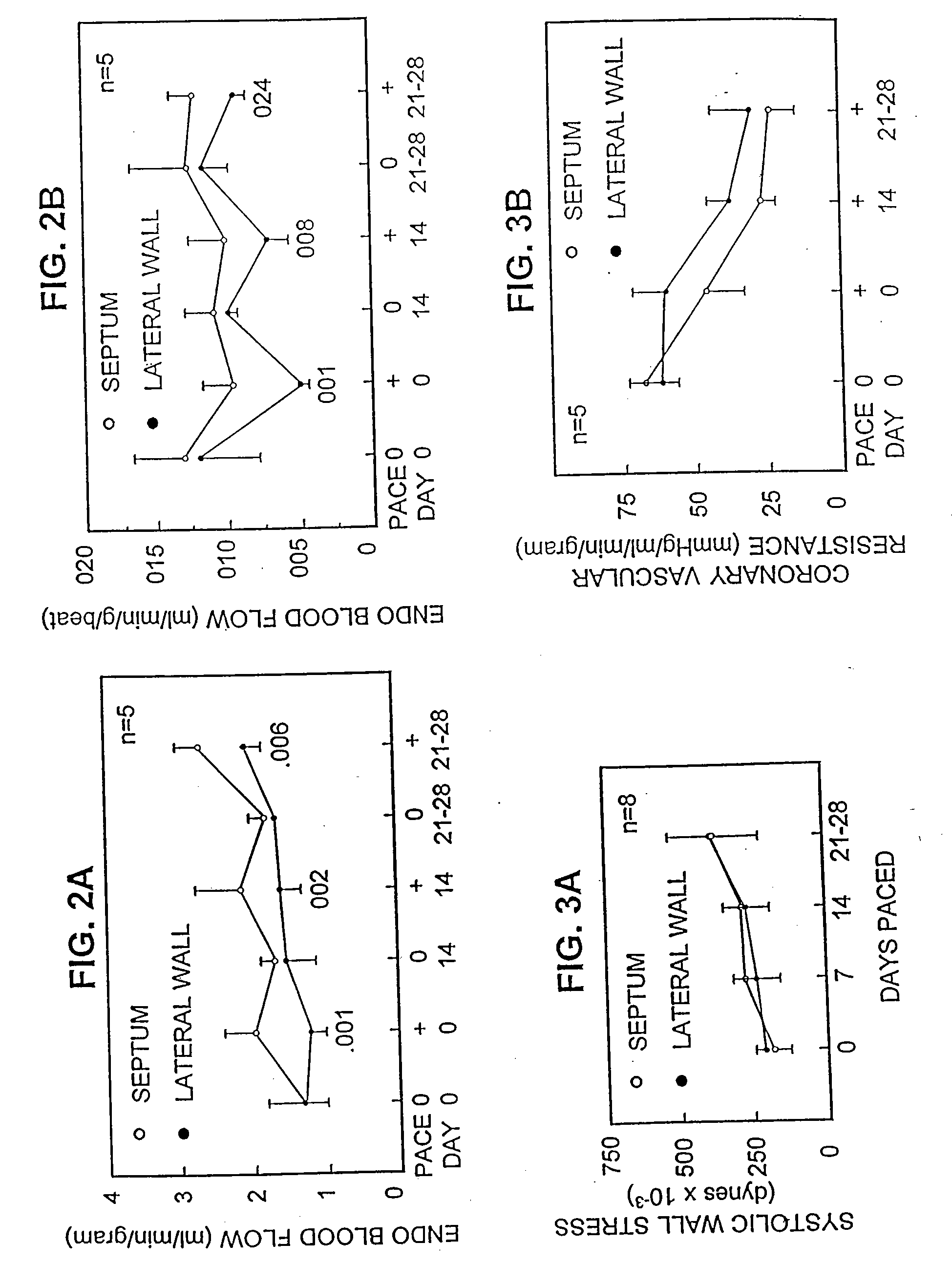Techniques and compositions for treating cardiovascular disease by in vivo gene delivery
a technology of in vivo gene delivery and composition, applied in the direction of dsdna viruses, peptide/protein ingredients, genetic material ingredients, etc., can solve the problems of poor prognosis, various limitations of all types of diseases, and inability to cure, so as to reduce the potentially harmful effects of angiogenesis, increase the contractile function, and reduce the effect of angiogenesis
- Summary
- Abstract
- Description
- Claims
- Application Information
AI Technical Summary
Benefits of technology
Problems solved by technology
Method used
Image
Examples
example 1
Porcine Model of Congestive Heart Failure and Associated Myocardial Ischemia
1-A. Animals and Surgical Procedure
[0148]Nine Yorkshire pigs (Sus scrofa) weighing 40±6 kg were anesthetized with ketamine (50 mg / kg IM) and atropine sulfate (0.1 mg / kg IM) followed by sodium amytal (100 mg / kg IV). After endotracheal intubation, halothane (0.5% to 1.5%) was delivered by a pressure-cycled ventilator throughout the procedure. At left thoracotomy, catheters were placed in the aorta, pulmonary artery, and left atrium. A Konigsberg micromanometer was placed into the left ventricular apex, and an epicardial unipolar lead was placed 1.0 cm below the atrioventricular groove in the lateral wall of the left ventricle. The power generator (Spectrax 5985; Medtronic, Inc.) was inserted into a subcutaneous pocket in the abdomen. Four animals were instrumented with a flow probe (Transonic, Inc.) around the main pulmonary artery. The pericardium was loosely approximated and the chest closed. Seven to 10 day...
example 2
Preparation of Illustrative Gene Delivery Constructs
2-A. Preparation of Illustrative Adenoviral Constructs
[0172]As an initial gene delivery vector, a helper independent replication deficient human adenovirus-5 system was used. As an initial illustration of vector constructs, we used the genes encoding β-galactosidase and FGF-5. Recombinant adenoviruses encoding β-galactosidase or FGF-5 were constructed using full length cDNAs. The system used to generate recombinant adenoviruses imposed a packing limit of about 5 kb for transgene inserts. Each of the β-gal and FGF-5 genes operably linked to the CMV promoter and with the SV40 polyadenylation sequences were less than 4 kb, well within the packaging constraints.
[0173]The full length cDNA for human FGF-5 was released from plasmid pLTR122E (Zhan et al., Mol. Cell. Biol., 8:3487, 1988) as a 1.1 kb ECOR1 fragment which includes 981 bp of the open reading frame of the gene and cloned into the polylinker of shuttle vector plasmid ACCMVpLpA. ...
example 3
In Vitro and In Vivo Gene Transfer in Rats
3-A Ad.β-Gal Gene Transfer and Expression
[0186]Adult rat cardiomyocytes were prepared by Langendorf perfusion with a collagenase containing perfusate according to standard methods. Rod shaped cells were cultured on laminin coated plates and at 24 hours, were infected with the β-galactosidase-encoding adenovirus obtained in the above Example 2, at a multiplicity of infection of 1:1. After a further 36 hour period, the cells were fixed with glutaraldehyde and incubated with X-gal. Consistently 70-90% of adult myocytes expressed the β-galactosidase transgene after infection with the recombinant adenovirus. At a multiplicity of infection of 1-2:1 there was no cytotoxicity observed.
3-B. rAAV / IGF-1 Gene Transfer and Expression
[0187]To assess the effects of IGF-1 expression in rat neonatal cardiac myocytes, 2×10 e6 cells were plated on 10 cm cell culture dishes and infected with 1×10 e10 DNase resistant particles of rAAV / IGF-1 or rAAV / EGFP. Cells w...
PUM
| Property | Measurement | Unit |
|---|---|---|
| diameter | aaaaa | aaaaa |
| diameter | aaaaa | aaaaa |
| time | aaaaa | aaaaa |
Abstract
Description
Claims
Application Information
 Login to View More
Login to View More - R&D
- Intellectual Property
- Life Sciences
- Materials
- Tech Scout
- Unparalleled Data Quality
- Higher Quality Content
- 60% Fewer Hallucinations
Browse by: Latest US Patents, China's latest patents, Technical Efficacy Thesaurus, Application Domain, Technology Topic, Popular Technical Reports.
© 2025 PatSnap. All rights reserved.Legal|Privacy policy|Modern Slavery Act Transparency Statement|Sitemap|About US| Contact US: help@patsnap.com



